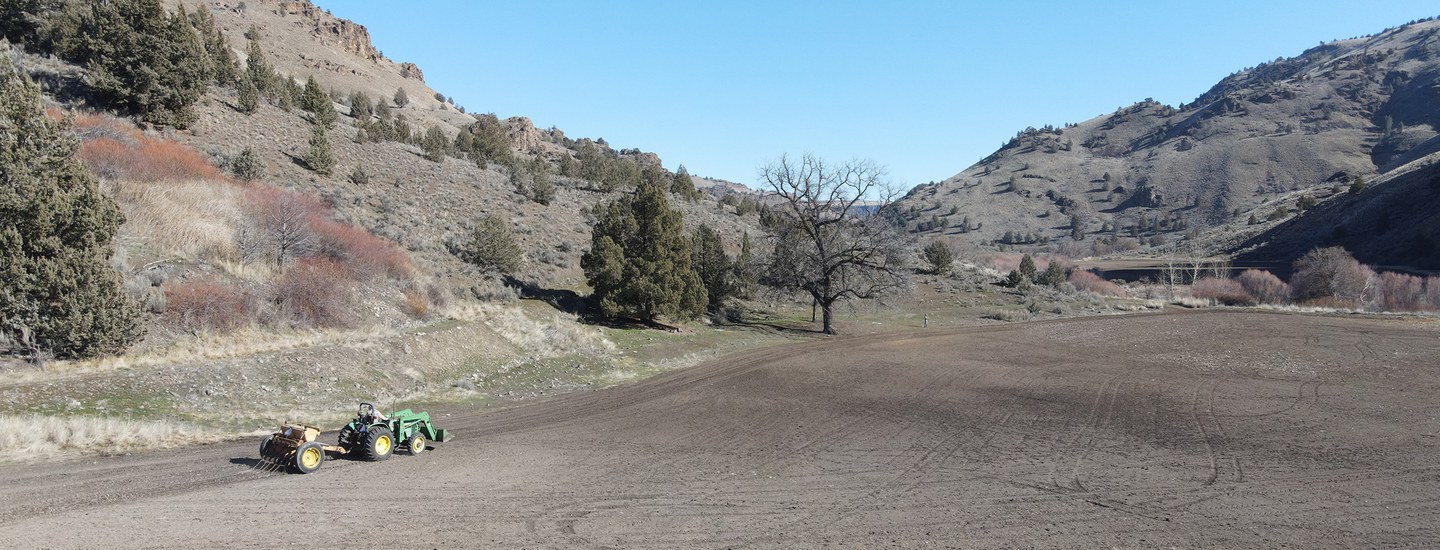The Land Trust has been busy with several restoration projects at Priday Ranch this spring and summer. We thinned 250 acres of juniper in April and May to help reduce fire danger and improve habitat for wildlife, and have been working for the past year on a field restoration project in the valley along Trout Creek. We are happy to report our field restoration efforts are progressing nicely!
Last summer the Land Trust began converting 20 acres of agricultural fields back to native habitat by remove weeds and bringing back native plant communities. First, we plowed the fields and targeted portions with herbicide. Then, this past winter we planted the former field with nine types of native grass seed. We used a combination of techniques for planting including a traditional no-till seed drill, a rangeland seed drill (good for rocky areas), and a process of spreading seed and harrowing (dragging chains over the seeded ground to cover the seeds with soil). 
A few years down the line, if we have a healthy stand of native bunchgrasses and the weeds are generally under control, we can add diversity to these fields by interplanting flowers and other plants important to pollinator species. Stay tuned for more soon!
Learn more:


